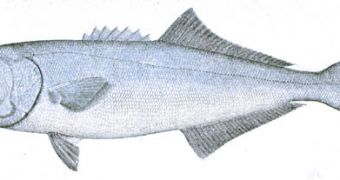The fish in Lake Victoria, Africa, seem to have developed an interesting way to reproduce. Apparently, the females choose their future mates not by their appearance, but rather by a dominant pigment in the skin that their eyes are sensitive to. This adaptation to their environment may very well be the way new species appear and evolve.
According to a recent study of the famous lake, in which several hundred of species live, depth plays an important role in the mating process. Fish living closer to the surface tend to have a blue-colored skin and, therefore, tend to mate with females whose eyes are more receptive to the color blue.
On the other hand, in deeper waters, the red pigment prevails and females choose males that have bright red “nuptial” suits. It's interesting to notice that the separation of colors occurs as a stage in the natural selection process, and had nothing to do with the influence of human activities and fish's habitats.
The fact that the amount of light varies with depth means that species usually tend to divide into more subspecies, as is the case with cichilds in lake Victoria, which have evolved to the point they are now in only a few thousand years, not a long time on the evolutionary scale. As a reference point, it took dinosaurs over 50 million years to adapt to their environment.
According to evolutionary biologist Ole Seehausen from the Bern University, human activity is already affecting the natural ecosystems of almost all African lakes. Increased levels of pollution, coming mostly from the agricultural field, tend to dirty the waters, causing color-mating processes to lose their favorable conditions. This is very unfortunate, as Seehausen says that, given a few thousand years more, the cichilds in Lake Victoria would have probably evolved into two different subspecies, with color and the depth they live at being the single differences.
Now, it seems that, as the pollution rate is rising, these two potential subspecies may again merge into a single one, of fish oblivious to the color their mates have and the depths they live at.

 14 DAY TRIAL //
14 DAY TRIAL //